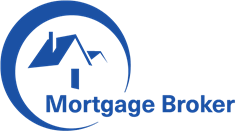How to Compare Loans
A loan is an amount of money borrowed from a lender, typically a bank or credit union, that you pay back at a later date, along with interest. A loan can be used for a variety of purposes, including financing a home, automobile or other major purchase. When comparing loans, it’s important to consider four primary features: principal, interest, installment payments and term. Understanding these characteristics can help you make a better decision about which loan may best fit your needs.
Loans are disbursed for a variety of reasons, including purchasing an item, debt consolidation or investing in a new business venture. In addition, they can be used to cover emergency expenses. Regardless of the reason, lenders will typically provide a range of loan terms and repayment options, which can vary by lender. You can use a loan calculator to see what your monthly payments would be with different terms and rates.
While loan types vary, most have similar attributes. They are generally composed of principal and interest, along with additional terms that can be negotiated in the lending agreement. Loans may also have collateral requirements or a set maturity date. Depending on the type of loan, you might also be required to pay an origination fee. The fees will vary by lender, but most lenders will deduct them from the total loan funds you receive.
The type of loan you choose will influence the interest rate and other terms that are offered. For example, a secured loan requires you to pledge a physical asset like your home or car as collateral if you are unable to repay the debt on time. These loans are typically less risky for lenders, so they have lower interest rates than unsecured loans.
Personal loans are often unsecured, but you can also take out an equity line of credit or mortgage loan secured by your home. These loans are more expensive than a personal loan, but they allow you to borrow a larger amount and have a longer term.
Other types of unsecured loans include student and payday loans. These loans have high interest rates and short repayment periods, making them a poor choice for large purchases or debt consolidation.
A line of credit or HELOC is a type of revolving loan that allows you to borrow up to a certain limit and pay it off as you go. This makes it useful for recurring expenses or bigger expenditures that you don’t have the cash to fund right away. Many consumers use credit cards and revolving lines of credit to finance everyday spending, while others turn to a personal loan or home equity loan to fund a renovation or other big expense.
Loans are an essential part of the economy because they help people buy what they need without having to save all the money upfront. Aside from helping with the overall money supply, loans help small businesses grow and open up competition by allowing competitors to enter the market. However, you should always weigh the pros and cons of a loan before applying.
